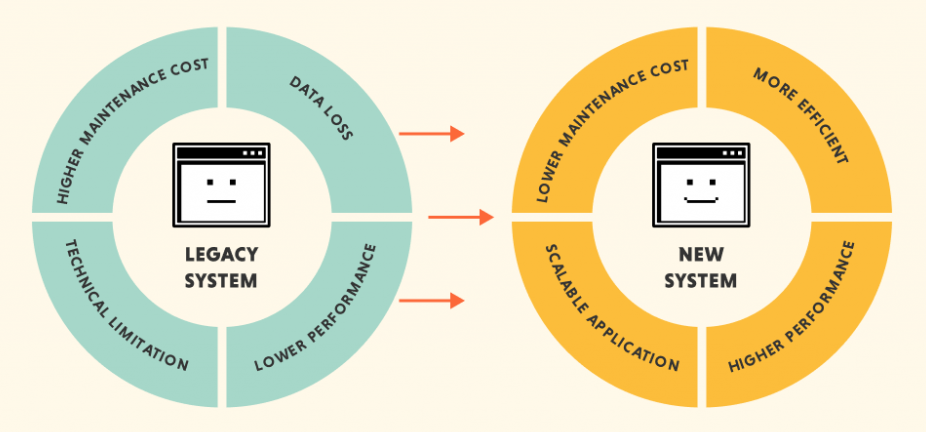Legacy Systems: Chellenges, Risks and Modernisation
What is a legacy system? Challenges, risks and migration
A legacy system is an outdated computer system that is used to store and track important data. These systems are often hard to maintain and update, which can lead to security risks and costly downtime. Legacy systems can also be very inflexible, making it difficult to integrate new technologies or add new features.

Migrating from a legacy system to a newer one can be a challenging and risky process. It’s important to carefully plan the migration and have a clear understanding of the potential risks involved. Otherwise, you could end up losing important data or experiencing significant downtime.
There are many factors to consider when migrating from a legacy system. Some of the most important include:
– Compatibility: Will the new system be compatible with the old one?
– Security: How will the data be protected during the migration?
– Cost: What will it cost to migrate to the new system?
– Downtime: How much downtime can be expected during the migration?
Migrating from a legacy system can be a daunting task, but it’s important to remember that there are many benefits to upgrading. By taking the time to plan and execute a successful migration, you can ensure that your organization enjoys all the benefits of a modern computing infrastructure.
Why do some companies still use legacy in house systems?
There are a few reasons that companies may still opt to use in-house, or legacy, systems rather than move to cloud-based options. In some cases, the company may feel that their data is more secure if it is stored on-site and under their direct control. Additionally, some businesses may have specific compliance requirements that can only be met with an in-house system. Finally, some companies simply prefer the familiarity of an in-house system that they have been using for many years. While there can be benefits to sticking with an in-house system, it is important to weigh those against the potential advantages of moving to the cloud. In many cases, the cloud can provide greater flexibility, scalability, and cost-efficiency than an in-house system.
How do legacy systems slow down business growth?
There are a number of ways in which legacy systems can slow down business growth. One of the most common is by limiting the ability of businesses to improve their processes and operations. Legacy systems often rely on outdated technology, which can make it difficult or even impossible to integrate new applications and technologies. This can lead to inefficiencies and errors, as well as hampering the ability of businesses to keep up with the latest trends.
Another way that legacy systems can impede business growth is by preventing Rotherham businesses from taking advantage of new opportunities. For example, if a company wants to expand into new markets, but its legacy system cannot support the necessary applications and processes, it will be at a disadvantage. Additionally, if a company wants to adopt new business models or enter into new partnerships, but its legacy system is not compatible, it may again be hindered.
Finally, legacy systems can also make it difficult for Rotherham businesses to scale up their operations. If a company has outgrown its current system, it may be reluctant to invest in a new one because of the high costs and complexity involved. This can lead to stagnation, as businesses are unable to take advantage of new opportunities or meet the demands of their growing customer base. In some cases, companies may even be forced to downsize if they cannot afford to upgrade their legacy system.
While legacy systems can certainly have a negative impact on business growth, there are ways to mitigate these effects. One option is to invest in modernization efforts that will bring the legacy system up to date. This can be a costly and time-consuming process, but it can be well worth it in the long run. Alternatively, businesses can look for alternative solutions that are compatible with their legacy system. This may involve using different applications or partnering with other companies that have the necessary technology. By taking these steps, businesses can continue to grow and thrive, despite having a legacy system in place.
Why do we need to modernize legacy systems?
There are many reasons why we need to modernize legacy systems. First, legacy systems are often based on outdated technologies that are no longer supported by the vendor or are otherwise difficult to maintain. This can lead to increased support costs and decreased reliability. Additionally, legacy systems can be inflexible and unable to keep up with changing business needs. Finally, legacy systems can pose security risks due to their lack of built-in security features. Modernization can address all of these issues and more, resulting in increased efficiency, flexibility, and security.
Feel free to contact Rotherham Apps if you want to continue the discussion on how to modernize legacy systems.
